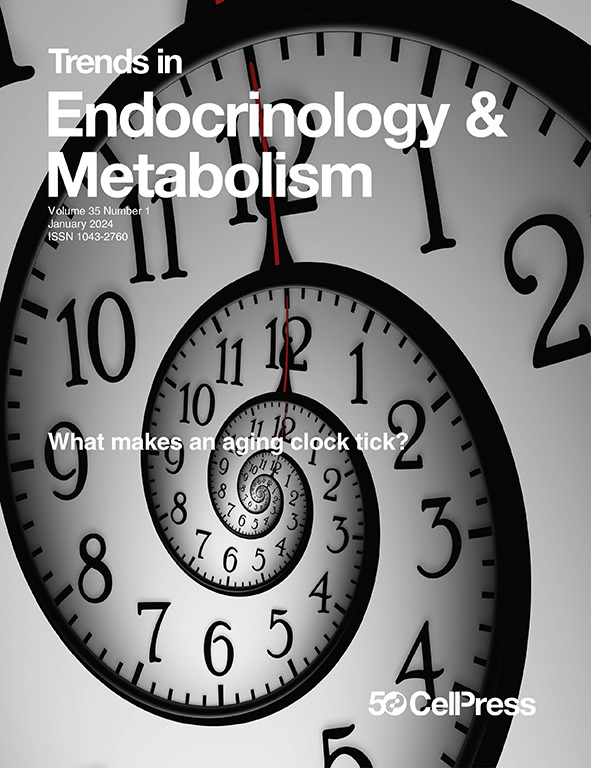MASLD 在小鼠体内的翻译过程中丢失了吗?
IF 11.4
1区 医学
Q1 ENDOCRINOLOGY & METABOLISM
Trends in Endocrinology and Metabolism
Pub Date : 2024-06-01
Epub Date: 2024-04-09
DOI:10.1016/j.tem.2024.03.005
引用次数: 0
摘要
缺乏临床前模型转化常常被归咎于药物开发失败。在此,我们结合人类脂肪性肝病(SLD)讨论小鼠模型。衰老和非食物性肝压力源等变量常常被忽视,但它们可以解释在实验室中再现人类疾病所面临的挑战。本文章由计算机程序翻译,如有差异,请以英文原文为准。
Is MASLD lost in translation in mice?
Lack of preclinical model translation is often blamed for failed drug development. Here we discuss mouse models within the context of human steatotic liver disease (SLD). Variables such as aging and non-food hepatic stressors are often ignored but could explain challenges in reproducing the human disease in a laboratory.
求助全文
通过发布文献求助,成功后即可免费获取论文全文。
去求助
来源期刊

Trends in Endocrinology and Metabolism
医学-内分泌学与代谢
CiteScore
20.10
自引率
0.00%
发文量
98
审稿时长
82 days
期刊介绍:
Trends in Endocrinology and Metabolism (TEM) stands as a premier Reviews journal in the realms of metabolism and endocrinology. Our commitment is reflected in the publication of refined, concise, and highly impactful articles that delve into cutting-edge topics, encompassing basic, translational, and clinical aspects. From state-of-the-art treatments for endocrine diseases to groundbreaking developments in molecular biology, TEM provides comprehensive coverage.
Explore recent advancements in diabetes, endocrine diseases, obesity, neuroendocrinology, immunometabolism, molecular and cellular biology, and a myriad of other areas through our journal.
TEM serves as an invaluable resource for researchers, clinicians, lecturers, teachers, and students. Each monthly issue is anchored by Reviews and Opinion articles, with Reviews meticulously chronicling recent and significant developments, often contributed by leading researchers in specific fields. Opinion articles foster debate and hypotheses. Our shorter pieces include Science & Society, shedding light on issues at the intersection of science, society, and policy; Spotlights, which focus on exciting recent developments in the literature, and single-point hypotheses as Forum articles. We wholeheartedly welcome and encourage responses to previously published TEM content in the form of Letters.
 求助内容:
求助内容: 应助结果提醒方式:
应助结果提醒方式:


